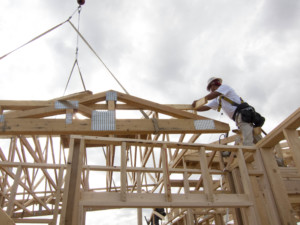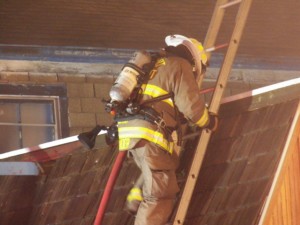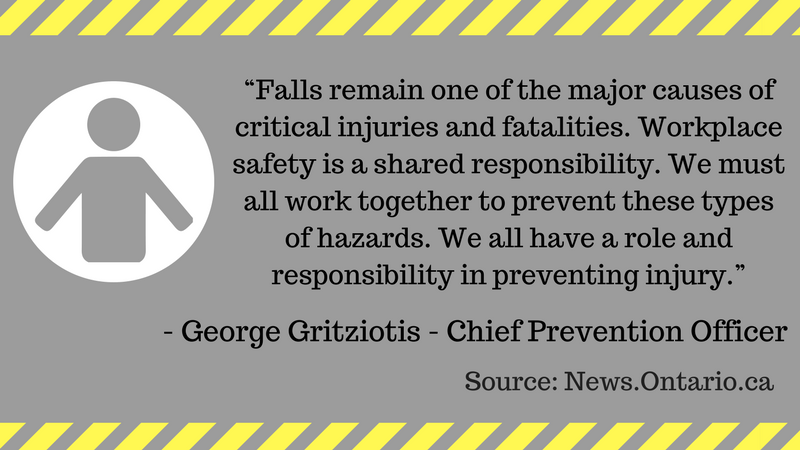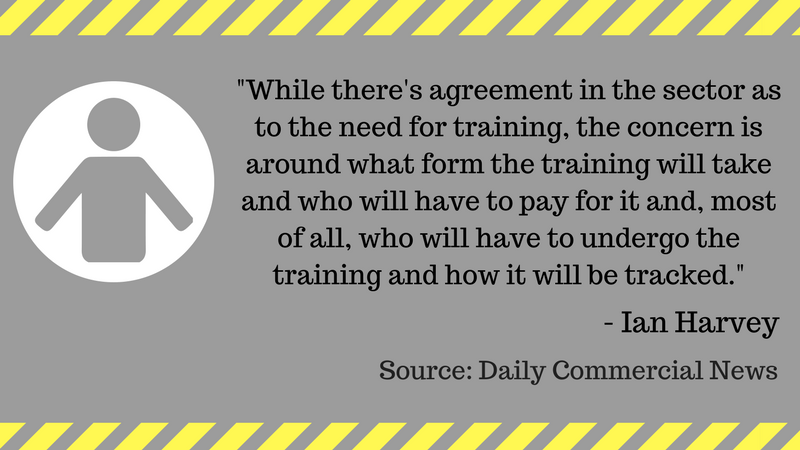Working at Heights Training in Ontario

Did you know that the Ontario Ministry of Labour, Immigration, Training and Skills Development (MLITSD) requires workers working on Construction Projects to complete Working at Heights training? Right now, there is currently a two-year transition period for workers who, prior to April 1, 2015, met the fall protection training requirements outlined in subsection 26.2(1) of the Construction Projects Regulation. Workers who met these requirements have until April 1, 2017, to complete an approved Working at Heights (WAH) training course. WAH training is the first step to managing towards ACUTE’s Zero incidents goal in Ontario. Ready to sign up for WAH training? Contact the experienced training professionals at ACUTE for more information!
Wondering what courses we’re offering right now?
ACUTE’s Working at Heights Training
The following lists all Working at Heights courses and related fall protection training offered by ACUTE.
Working At Heights (CPO Approved)
 ACUTE’s Working at Heights course combines both theory and hands-on, practical training for an optimal learning experience. This program aims to strengthen workplace safety culture, provide knowledge on how to prevent accidents, provide information about proper use of safety equipment, and overall reduce the number of workplace falls and incidents.
ACUTE’s Working at Heights course combines both theory and hands-on, practical training for an optimal learning experience. This program aims to strengthen workplace safety culture, provide knowledge on how to prevent accidents, provide information about proper use of safety equipment, and overall reduce the number of workplace falls and incidents.
ACUTE’s Working at Height training program has been approved by the Chief Prevention Officer under the Ministry of Labour, Immigration, Training and Skills Development’s Working at Heights Training Program Standard and the Working at Heights Training Provider Standard.
Advanced Working at Heights and Rescue
 This course builds upon what was learned during the Working at Heights course and adds another important layer – rescue. With experienced instructors and classroom interactions, participants will have the opportunity to learn practical, hands-on rescue exercises and theory such as rescue planning and review of legislation. This course is ideal for those who will be working at heights and may have to perform a rescue at heights.
This course builds upon what was learned during the Working at Heights course and adds another important layer – rescue. With experienced instructors and classroom interactions, participants will have the opportunity to learn practical, hands-on rescue exercises and theory such as rescue planning and review of legislation. This course is ideal for those who will be working at heights and may have to perform a rescue at heights.
Fall Protection
 This training course is geared towards those working at heights in Industrial Establishments, Mining Operations, Health Care and Residential Facilities sectors, or workplaces other than Construction Projects. This flexible training course can be modified to suit your specific industry’s needs and to address workplace-specific equipment. This course includes hands-on practical training, detailed videos, classroom interaction with experienced instructors, and more.
This training course is geared towards those working at heights in Industrial Establishments, Mining Operations, Health Care and Residential Facilities sectors, or workplaces other than Construction Projects. This flexible training course can be modified to suit your specific industry’s needs and to address workplace-specific equipment. This course includes hands-on practical training, detailed videos, classroom interaction with experienced instructors, and more.
Scaffolding and Ladder
 This course focuses on the dangers of working at heights from a scaffold or ladder, and how to prevent accidents and incidents. Our Scaffolding and Ladder course teaches participants how to work safely from ladders and scaffolding, including how to properly dismantle them after use. Participants will learn how to properly identify workplace hazards related to scaffolding and ladders, how to identify safe scaffold setups, and more.
This course focuses on the dangers of working at heights from a scaffold or ladder, and how to prevent accidents and incidents. Our Scaffolding and Ladder course teaches participants how to work safely from ladders and scaffolding, including how to properly dismantle them after use. Participants will learn how to properly identify workplace hazards related to scaffolding and ladders, how to identify safe scaffold setups, and more.
For more detailed information about the different levels of Working at Heights training, click here.
Working at Heights Training In Ontario: In The News

Construction work and other occupations that require working at heights can be very dangerous. According to the July 3, 2016 Ontario Newsroom News Release, falls were the number one cause of serious injuries and deaths among construction site workers in 2015. Working at heights accidents continue to happen all across Ontario.
In August 2016, CBC News reported that a man died on a work site after falling 10 metres off of a roof in Forest Hill. Workplace falls can be prevented with proper training, proper usage of safety equipment, and supervision.

Though many are happy with the new WAH legislation requiring workers to be trained on the new industry standard, there has been some controversy in the news. In feedback provided to the MLITSD, many have stated that training should only be required for new construction workers who have not received training. The biggest issue shared by employers is the cost of providing training to so many workers all at once.

Tensions surrounding costs versus safety in Working at Heights training in Ontario will likely not disappear anytime soon. However, it is important to remember that the safety of workers should always come first. Not complying with government requirements can end up costing much more in the end.
Source: dailycommercialnews.com and News.Ontario.ca
World Class Health and Safety Center

ACUTE offers all clients the opportunity to learn and train at our World Class Health and Safety Center. Our training center is one of the best-equipped facilities in all of Ontario, patroned by various provincial and federal agencies. We offer engineered simulators for true hands-on, practical experience and the opportunity to learn with experienced trainers. For Working at Heights training, we have a full-scale construction site and synthetic precision human mannequins to enable coordinated team training, communication, and emergency response.
Training With ACUTE
The following listing of companies who have used ACUTE’s training services was retrieved from Google Reviews. ACUTE has provided training services for clients all over Ontario.
JD Graphics – 55 Fleming Dr #7, Cambridge, ON
Ad Art Fabricating Inc. – 55 Fleming Dr #16, Cambridge, ON
ORTECH Consulting Inc. – 804 Southdown Rd, Mississauga, ON
Culliton – 473 Douro St, Stratford, ON
Acklands-Grainger Inc. – 120 Nebo Rd, Hamilton, ON
Weber Environmental Services – 3828 Chilligo Road, R.R. #2, Breslau, ON

Are you ready to sign up with ACUTE’s Working at Heights course or would like to know more about our services? We’re happy to help with any questions you may have!
“We have used Acute Environmental & Safety Services Inc. for many years and our personnel always come back well trained, energized, and bringing lots of ideas. They are provided with substantial and in-depth knowledge together with challenging opportunities to put into practice what they have learned into our field operations.”
- Dante, Environmental Service Company – more testimonials here!


